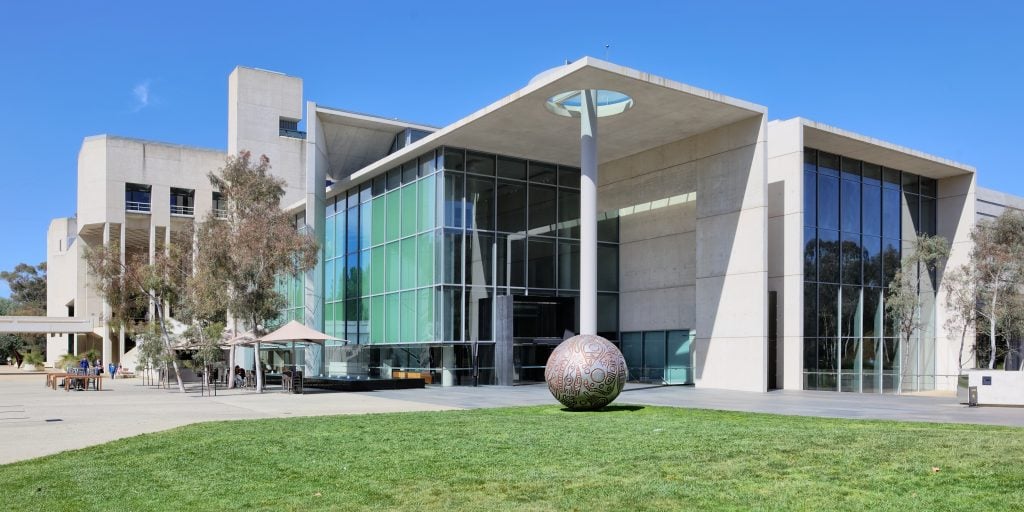Art World
The National Gallery of Australia Will Cut at Least 10 Percent of Its Staff as It Seeks to Recoup $1.5 Million
The Canberra museum is trying to dig itself out of a financial hole.

The Canberra museum is trying to dig itself out of a financial hole.

Kate Brown

The National Gallery of Australia in Canberra is taking drastic measures to snap itself out of a looming financial crisis.
In a statement issued on Tuesday, June 23, the museum, which is facing a multi-million dollar deficit according to a report in the Guardian, said it was asking staff members to volunteer for layoffs before moving forward with a non-voluntary restructuring plan.
In total, the museum is looking to cut between 10 percent and 12 percent of its 300-person staff.
The museum said that employees who signed up for layoffs would be “paid their full entitlements and offered wellbeing support and career assistance opportunities,” but did not elaborate on details.
The institution, which reopened on June 2 after a months-long closure and is allowing only 20 visitors at a time, will also dramatically slash its annual acquisitions program to recoup an estimated $1.5 million in losses.
Before the crisis hit, the museum had been developing a new acquisition strategy that focuses on masterworks rather than volume. A report in the Guardian stated that the museum is to acquire only 100 works of art per year, down from 3,000, but the museum refutes these numbers. The aim, according to the museum, is to “reinstate the National Gallery’s focus on building a world class collection with masterworks.” The museum tells Arnet News it has no plans to deaccession any works due to the global health situation.
In a statement to Artnet News, the museum said that “[this] has not be put in place as a cost saving measure. The National Gallery’s announcement has no impact on our acquisitions program and collection development.” No funds will be diverted from the collection’s funds to operational expenses.
Museum director Nick Mitzevich, who was appointed in late 2018, told the Canberra Times that the cutbacks are related not only worldwide economic headwinds, but also to longstanding budgetary problems at the museum driven by rising utility and maintenance costs, and falling interest rates. “We, like every arts and cultural institution, have to look to create a future where we can sustainably deliver on our mandate. We have needed a plan that will both improve and protect the gallery’s long-term offering and our financial stability,” Mitzevich said in a statement. “Inevitably, that means change.”
According to the Guardian, the museum was over budget by $12.8 million in 2018–19, eventually reporting a $10.7 million loss, even though the Australian government increased its funding to the institution from $30.6 million to $45 million.
According to a spokesperson from the museum, non-government funds, including ticket sales and other revenue streams, account for 30 percent of the museum’s revenue.
In 2019, the National Gallery undertook a new acquisitions strategy focusing on “masterworks rather than volume.” The policy change was followed by the acquisition of a Jordan Wolfson work for nearly $5 million—half of the museum’s collecting budget for that year.
[6/25: An earlier version of this article referenced a report in the Guardian stating that the National Gallery was slashing acquisitions from 3,000 to 100 a year. The National Gallery refutes this number and the article has been updated accordingly.]